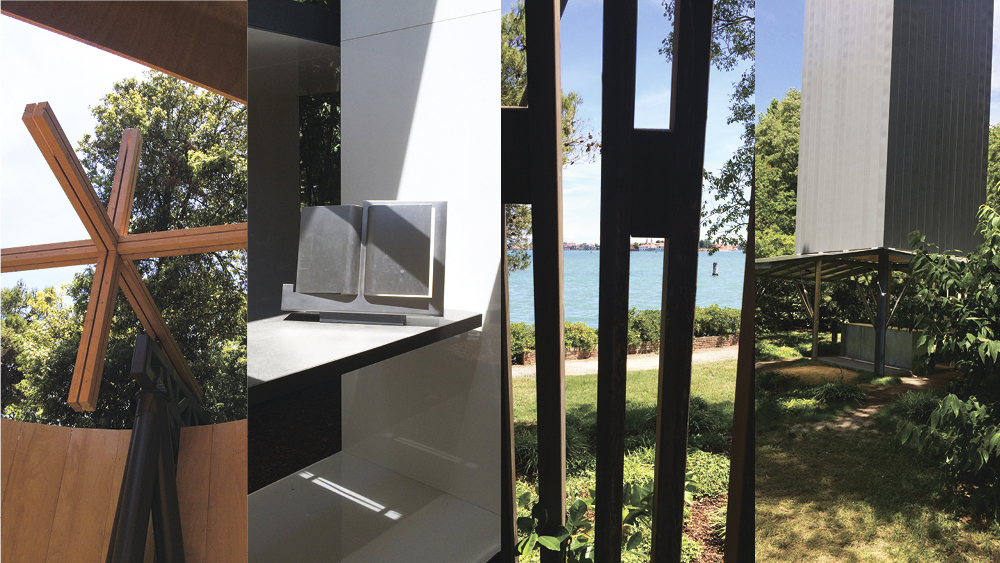The recipe: take one island, let loose ten international architects to design chapels, build them and maybe create a stir.
The Vatican has entered the Venice Architectural Biennale for the first time and its takeover of the island of San Giorgio Maggiore just opposite St Mark’s Square has stirred something.
In the 21st century, are our church gatherings trapped in boxes or can we do better? San Giorgio gives an answer – that just as Christians sing, maybe the spaces we sing in can be joyful. Here are five of them.
Terunobu Fujimori asks visitors to his chapel “to enter by the narrow gate,” a door that even this thin man feels the need to twist to enter.
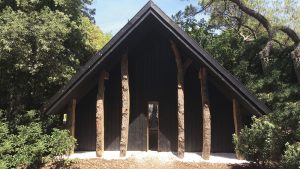
Terunobu Fujimori’s narrow door
The door lies between hewn tree trunks which invites us into a traditional church shape. Inside, a large wooden cross and the beams play off each other. “Maybe it is only in Japan,” he writes, “but it seems that when the people think about Christianity, the cross comes first to mind.” Fujimori’s very traditional chapel, which could take a church plant tomorrow, is a reminder that Australian Christians have become oddly shy about crosses on their churches.
Javier Corvalan from Spain has also made a cross the centre of his chapel; this time a three-dimensional cross that reads from anywhere within a tilted cylinder that circles it. The cylinder rises like a spaceship – this strips the idea of chapel to a meeting around a cross. It is not really a building, more a gesture.
The lone Australian, Sean Godsell, provides an outdoorsy space with a sophisticated metal tower rising from a metal table. (That will upset both Catholics and Protestant traditionalists.) The hollow tower is lined inside in a golden hue – which is an invitation to look up during communion. This looks like a pop-up affair that could be used for summer beach missions; there are benches for people to gather quite informally, and the bottom of the tower hinges up for shelter.
Norman Foster, from the UK, best known in Australia for several temples of commerce in glass and steel, turns to timber and a Gothic geometry to meet the San Giorgio chapel challenge. Steel supports form the cross in your mind’s eye as you walk through. Plants are growing up the timber lattice on either side. In time, this will end up as a green mini-cathedral. Good for gathering on a summer’s day, another one suitable for beach missions. Is the podium at the end a table or a stage? You decide.
The slickest chapel comes from Francesco Cellini, a self-conscious unbeliever who has tried for a stripped-down space, without religious meaning. But like a couple of other projects, it does provide for one major element, with a sculptural lectern shaped like a book. The Bible hovers in this minimalist space.
The Sydney Anglican, Phillip Jensen, had a good point when he described his St Andrew’s Cathedral (of which he was Dean for ten years) as a “rain shelter.” (Several of these chapels even fail this test.) Jensen wanted people to be clear they needed to avoid venerating buildings. But San Giorgio shows that churches can be bright and fun, and too contemporary to be holy.
The Venice Architecture Biennale will finish on November 25.
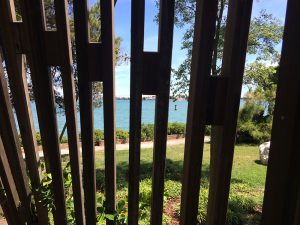
Norman Foster’s lattice John Sandeman
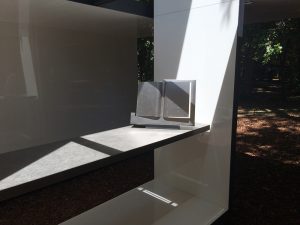
Franceso Cellini’s Bible lectern John Sandeman
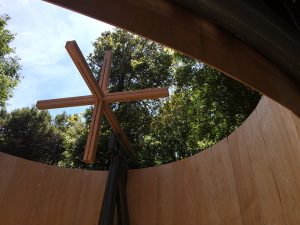
Javier Corvalin’s cross and circle John Sandeman
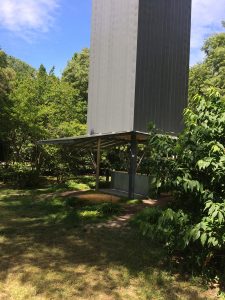
Sean Godsell’s cool tower John Sandeman
Email This Story
Why not send this to a friend?
